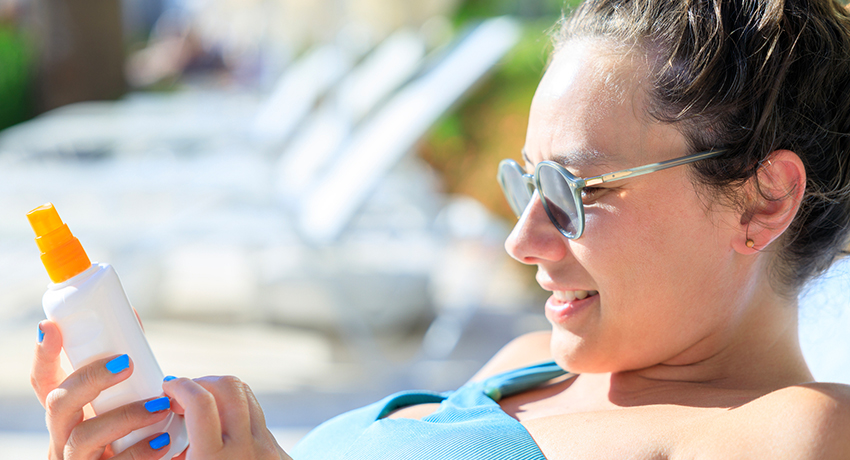That feeling of sunlight hitting your skin on a beautiful summer day may evoke a sense of happy tranquility, but the rays coming from the sun can have a long-lasting and harmful impact without proper protection.
Follow this guide to help choose the best product to safeguard your skin.
SPF

The sun protection factor, commonly called SPF, is the most important measurement when considering sunscreen, says Megan Rogge, MD, a dermatologist with UT Physicians and associate professor with McGovern Medical School at UTHealth Houston.
“SPF 30 means it would take 30 times as long for you to get a sunburn, compared to not wearing sunscreen,” said Rogge. “Say you burn after one minute of exposure. If you were to wear an SPF 30 sunscreen, it would take you 30 minutes to burn.”
She says SPF 30 is the minimum SPF you should select, and if you plan to be outside for an extended duration you should wear SPF 50.
“Anything greater than SPF 50 has nearly the same benefit as SPF 50,” said Rogge. “SPF 30 blocks 97% of harmful rays and SPF 50 blocks 99%.”
It’s important to reapply your sunscreen as directed to keep that protection, which is typically every two hours.
Broad spectrum protection
Ultraviolet radiation, or UV, is present in sunlight. This type of sun ray can mutate the DNA in skin cells causing skin damage and skin cancer.
About 95% of the UV radiation that reaches the earth’s surface is UVA while UVB accounts for the other 5%.
“UVA plays a minor role in sunburn and skin cancer, but it contributes most heavily to photoaging like brown spots and wrinkles,” explained Rogge. “UVB plays a major role in both sunburn and skin cancer, so it’s important to protect against this harmful ray.”
Rogge says to look for sunscreens that list “broad-spectrum protection” to safeguard your skin from both UVA and UVB rays.
Mineral sunscreen vs. chemical sunscreen
Mineral sunscreens are made of such ingredients as zinc oxide and titanium dioxide. They are also called physical sunscreens because the ingredients physically act as a barrier between skin and the sun’s rays.
“These sunscreens work by blocking and scattering both UV and visible light, so they are less irritating to the skin, and they are immediately effective when applied,” said Rogge. “The drawback is that some formulations leave a white appearance when applied to the skin that some people might not like.”
Chemical sunscreens have ingredients like benzophenone, avobenzone, oxybenzone, and para-aminobenzoic acid (PABA).
“These actually absorb light and then reemit it as energy, like heat,” said Rogge. “Chemical sunscreens need to sit on your skin for about 15 minutes before they take effect. They give less of a white appearance to the skin than mineral sunscreens.”
Spray vs. lotion
When it comes to sunscreen application, Rogge recommends selecting a lotion over a spray.
“I much prefer a lotion or cream because you are directly applying it to your skin, whereas when you apply sunscreen spray outdoors, a lot of it is just carried away in the wind,” she said.
If you do buy a spray, Rogge says you have to take the same important second step with lotion, which is to rub it into your skin.
Sunscreen application
Choosing the best sunscreen on the market will mean little if isn’t properly applied. Rogge says it is critical to coat all of your exposed skin, and for the average adult that means using about 1 ounce of liquid sunscreen.
“That’s a lot,” she said. “Some sunscreen bottles are only 5 ounces, so that would be just five applications. Imagine if you have a family of five. You’re going through that bottle immediately if you apply the sunscreen correctly.”
When buying sunscreen she says to focus on a broad-spectrum SPF 30 or higher that comes in a lotion form and to always reapply your sunscreen at least every two hours.
She recommends using sunscreen anytime you plan to be outside, even if it’s a cloudy day.
“Eighty percent of UV radiation passes through clouds, so we can’t rely on cloudy skies to protect us,” said Rogge. “Generally speaking, if you’re going to spend any amount of time outside, you should protect your skin and avoid sun exposure during peak times from 10 a.m. – 2 p.m.”



